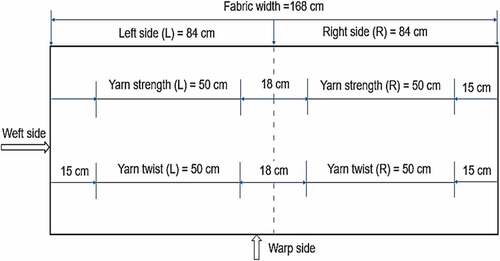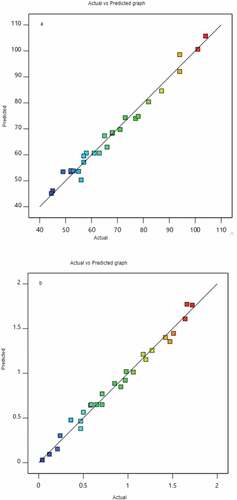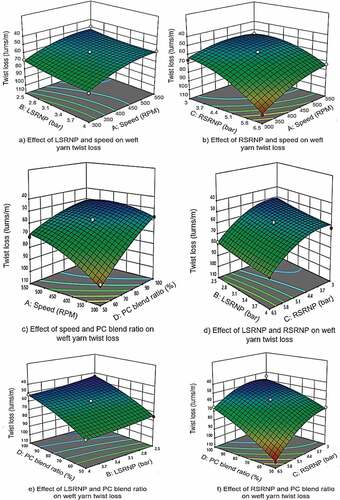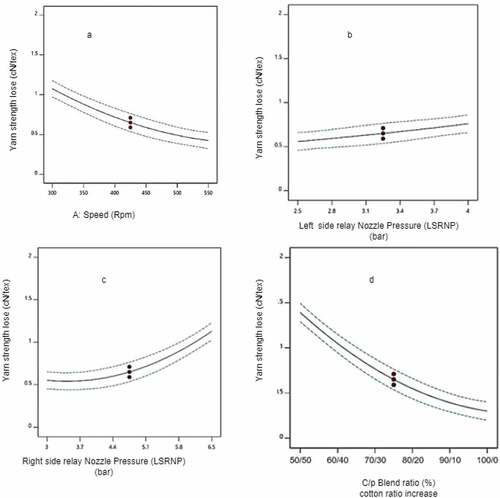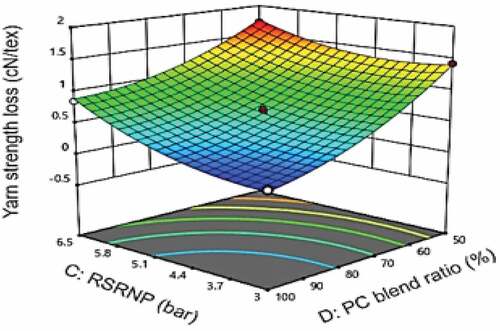Figures & data
Table 1. Yarn specification.
Table 2. Actual levels of factors.
Table 3. Experimental design.
Table 4. Experimental result.
Table 5. ANOVA for weft yarn twist loss.
Table 6. Fit statistics of weft yarn twist loss, tensile and tear strength of fabric.
Figure 3. Effect of loom speed (a), Left side relay nozzles pressure (b), Right side relay nozzles pressure (c) and cotton polyester bled ratio (d) on twist loss of the yarn.
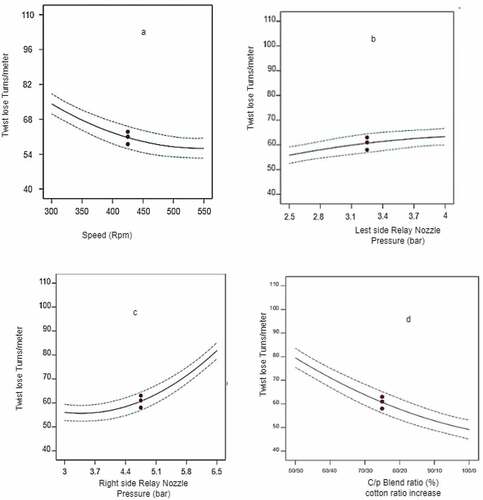
Table 7. ANOVA table for yarn strength loss.

